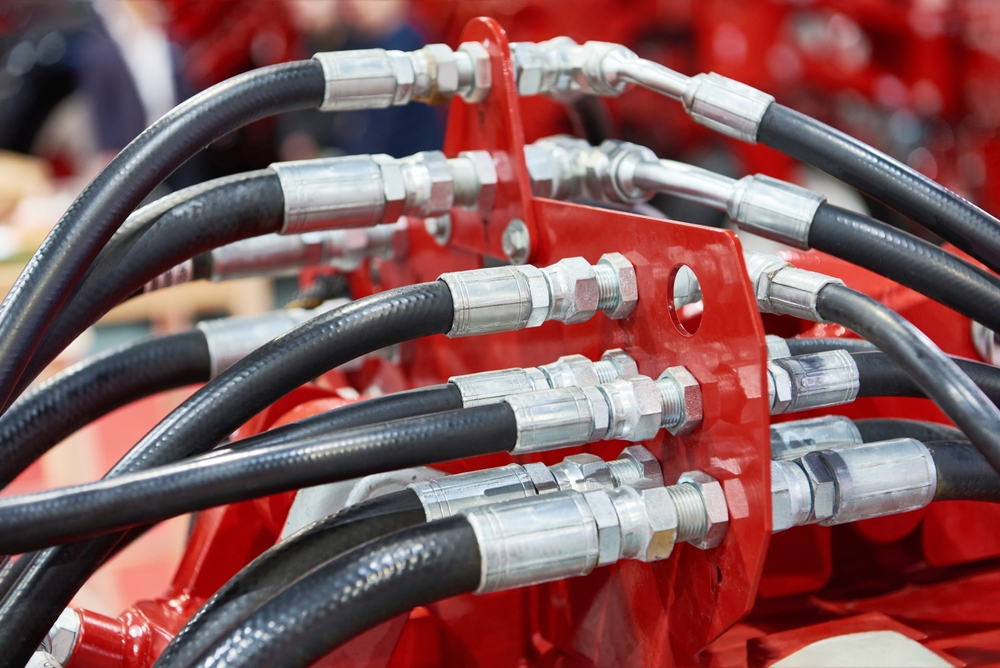
Crimping vs. Swaging: What’s Best for Your Hydraulic Hose?
When it comes to assembling hydraulic hoses, two common methods used to attach fittings are crimping and swaging. Although these terms are sometimes used interchangeably, they refer to two distinct techniques that offer their own sets of advantages and disadvantages. Understanding the difference between crimping and swaging hydraulic hose assemblies is crucial for selecting the right method for your specific needs. This blog will explore these techniques in depth, helping you decide which is the best choice for your hydraulic hose application.
What is Crimping?
Crimping is a widely used method for attaching fittings to hydraulic hoses. It involves using a crimping machine, which applies a radial force around the hose and its fitting to create a secure, leak-free connection. The crimping process involves placing the hose and fitting into the machine, where a die or mold is used to compress the fitting onto the hose at a specific pressure. This pressure causes the fitting to tightly grip the hose, creating a permanent seal. The result is a robust connection that is durable and capable of withstanding the high pressures typical in hydraulic systems.
The key advantage of crimping is its versatility. Crimping machines come in various sizes and configurations, making it possible to crimp hoses of different sizes and materials. Additionally, crimped connections are known for their reliability and long-lasting performance. As long as the correct crimping tools are used and the proper pressure is applied, crimped connections tend to be leak-free, making them ideal for high-pressure hydraulic systems.
However, crimping does require a higher level of precision to ensure that the correct fitting is used for the right hose. If the crimping process is not performed correctly, it can lead to issues such as weak or compromised connections, which may result in leaks or even failure of the hose assembly. For this reason, it is essential to use high-quality crimping machines and to follow the manufacturer’s recommendations for crimp size and pressure.
What is Swaging?
Swaging, on the other hand, is a different technique used to attach fittings to hydraulic hoses. Swaging involves using a specialized tool to apply a controlled force to the hose and fitting, causing the fitting to be deformed or “swaged” around the hose. Unlike crimping, which typically uses radial force, swaging involves a more complex mechanical process that relies on the deformation of the fitting to form a tight seal. The tool used for swaging gradually compresses the fitting, reducing its diameter and creating a permanent bond with the hose.
One of the primary benefits of swaging is its ability to create a connection that is resistant to high vibration, which can be a critical factor in certain hydraulic applications. Swaged fittings are also known for their smooth, uniform finish, which reduces the risk of any sharp edges that could potentially damage the hose or cause wear over time. This makes swaging a popular choice in industries where the integrity of the hydraulic hose is paramount.
Swaging is particularly useful for large-diameter hoses or those used in heavy-duty applications, as it allows for the formation of stronger connections. However, like crimping, the swaging process requires careful attention to detail. If the swaging process is not executed properly, the fitting may not form a tight enough bond with the hose, leading to potential leakage or failure. Therefore, specialized equipment and knowledge are required to perform this technique effectively.
Difference Between Crimping and Swaging
The difference between crimping and swaging hydraulic hose assemblies lies in the way the fitting is attached to the hose and the forces used during the process. While both methods aim to create a permanent, secure connection, they do so using different mechanisms.
In crimping, a machine applies radial pressure around the fitting to compress it onto the hose, which results in a tight seal. The fitting does not change its shape significantly, but it is compressed to create a connection. Crimping is commonly used for smaller hoses and is considered a more straightforward process, as the equipment used for crimping is generally easier to set up and operate.
Swaging, on the other hand, involves deforming the fitting around the hose by applying a more gradual, compressive force. Swaging is often used for larger hoses or those that are subjected to high vibrations and harsh conditions. It tends to produce a more uniform and smooth connection, which can reduce the risk of damage to the hose over time.
While both crimping and swaging can create durable, leak-free connections, the main difference between the two techniques is the way in which the force is applied and the impact this has on the finished product. Crimping creates a more compact, radial pressure around the fitting, while swaging deforms the fitting to create a tighter bond with the hose. Each method has its strengths, and the choice between crimping and swaging often depends on the specific application and the size of the hose being used.
Which Method Is Best for Your Hydraulic Hose?
Choosing between crimping and swaging for your hydraulic hose assemblies largely depends on the type of application, hose size, and the environment in which the hose will operate. For example, if you are working with smaller hydraulic hoses and need a cost-effective, straightforward solution, crimping may be the better option. Crimping is generally quicker and requires less specialized equipment, making it ideal for low to medium-pressure applications.
On the other hand, swaging is more appropriate for large-diameter hoses or those that will be exposed to high pressure or vibration. If you are working in an environment where the hose will be subjected to constant motion or harsh conditions, swaging may provide the added strength and durability needed to ensure a long-lasting connection. Swaging also offers a more uniform connection, which can be beneficial for reducing wear and tear on the hose and fitting over time.
In general, crimping is the go-to choice for most everyday hydraulic hose assemblies, while swaging is better suited for specialized applications. However, it’s important to consult with industry experts and manufacturers when deciding which method is best for your specific needs. Both methods can be effective, but the right choice will depend on factors such as the type of fluid being transported, the pressure levels, and the environmental conditions in which the hydraulic system will operate.
Conclusion
Both crimping and swaging are effective methods for creating secure, leak-free connections in hydraulic hose assemblies, but each has its own unique advantages and limitations. Crimping is widely used for smaller hoses and offers a quick, cost-effective solution for most hydraulic applications. Swaging, on the other hand, provides superior strength and durability for larger hoses or those exposed to harsh environments. By understanding the difference between crimping and swaging hydraulic hose connections and evaluating your specific requirements, you can make an informed decision about which method is best suited to your needs.
Royal Brass Incorporated
Welcome Royal Brass Incorporated! We are your 3rd generation, family-owned, local hose supplier! Our family has dedicated our services to supplying northern California with all types of hoses, fittings, flanges, regulators, valves, adapters, and gauges. We pride ourselves on having the most extensive inventory in northern California. Our inventory ensures that we can fix most products on site, the same day. Here at Royal Brass Incorporated, we only hire qualified individuals who are trained in factory sales. Our fully stocked warehouses ensure that we can fill your hydraulic and pneumatic hose, tubing, and fitting needs on time, every time. High-quality customer service is our goal and has been since 1952. Stop by or contact us today!
Categorised in: Hydraulic Hose





